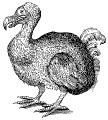| The Course | ||
| Lecture | ||
| Labs | ||
| Assignments | ||
| Tools |
Course prerequisites and textbooks

Prerequisites
Computational evolutionary biology draws, naturally enough, from both the disciplines of evolutionary biology and computer science. We expect participants to have some familiarity with at least the basics of molecular biology; elementary probability theory, calculus and differential equations; and some facility in at least one programming language and/or mathematical modeling.
The material covered in this course is selected in such a way that at its completion you should be able to understand current papers in the field of computational evolutionary biology. All lectures will be published in Adobe pdf format. If you do not have Adobe Acrobat Reader for pdf files on your computer, you can download it from www.adobe.com
Textbooks
Required (available at Quantum Books and the MIT Coop):
Sean Rice, Evolutionary Theory: Conceptual and Mathematical Foundations. Sinauer, 2004. ISBN 0-87893-702-1.
Barry Hall, Phylogenetic Trees Made Easy. Sinauer, 2004. ISBN 0-87893-312-3.
Recommended for reference (on library reserve):
D. Hartl and A. Clark, Principles of Population Genetics, Third Edition. Sinauer, 1997.
D. Futuyma, Evolutionary Biology, Third Edition. Sinauer, 1998.
J. Felsenstein, Inferring Phylogenies. Sinauer, 2003.
W. Ewens, Mathematical Population Genetics. Volume I, 2nd Edition. Springer-Verlag, 2004.
K. Weiss and A. Buchanan, Genetics and the Logic of Evolution. Wiley-Liss, John Wiley, 2004.
For those seeking a review of relevant biology, see Weiss and Buchanan. Futuyma provides an excellent overall view, while Hartl and Clark serves as a standard reference for population genetics. For those desiring more mathematical depth, see Felsenstein and Ewens.
Supplementary readings will be available as pdf files on the course website, and posted as needed. These will mostly be in the form of background readings and current research papers for the laboratory assignments.
Watch this space for additional reference material.